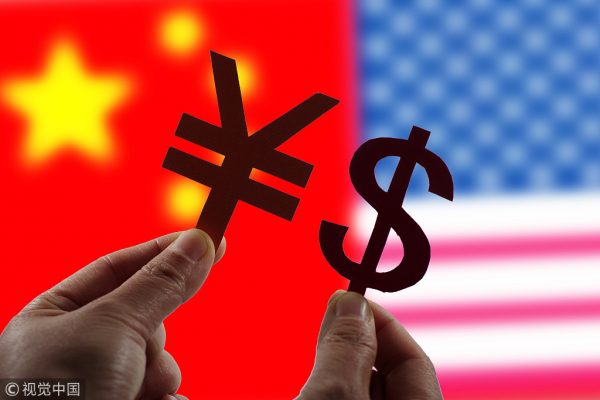
The White House on Tuesday issued a statement announcing that it was taking steps “to protect domestic technology and intellectual property” from what it called China’s “discriminatory and burdensome trade practices”.
The steps include a 25 percent tariff on $50 billion worth of Chinese goods containing “industrial significant technology” – with a list to be released by June 15 – along with the implementation of specific investment restrictions and enhanced export controls.
The move to finalize the March plan comes just 10 days after US Treasury Secretary Steven Mnuchin declared the looming trade war with China had been put on hold, and ahead of the arrival of US Commerce Secretary Wilbur Ross in Beijing on Saturday for further talks on trade.
China’s Ministry of Commerce responded by saying it was surprised by the move which was contrary to the consensus reached in Washington earlier this month, but said it was within China’s expectations.
It is US President Donald Trump’s common practice to ratchet up the stakes in this way in a bid to leverage concessions. And after the two sides reached a general agreement in their talks in Washington that it would be in both their interests to avoid a trade war, the devil it seems is now in the details.
It is to be hoped that the cut-and-thrust of the haggling will produce results as it is time this dispute was finally settled.
However, notably as the White House statement makes clear as well as having a bee in its bonnet about the trade deficit with China, the Trump administration now has another about China’s plan to upgrade its industry.
China’s Made in China 2025 is a blueprint for moving China’s industry higher up the value chain, and this has prompted the Trump administration to try and defend the US’ high-tech advantages by accusing China of forced technology transfers and intellectual property theft, and using the threat of the tariffs and restrictions to coerce China to enhance US companies’ access to the Chinese market to “expand exports”.
But as Chinese Ambassador to the World Trade Organization Zhang Xiangchen said on Monday at a WTO meeting, the Office of the United States Trade Representative has failed to produce “a single piece of evidence” to support its claims and there is nothing in its regulatory measures that requires technology transfer from foreign companies. If a US company thinks a deal is not worthwhile, it can simply choose not to proceed with it.
China has also made continual progress in strengthening intellectual property rights protection. According to calculations by the Peterson Institute for International Economics, China’s payment of licensing fees and royalties for the use of foreign technologies reached almost $30 billion in 2017, nearly four times the level a decade ago.
While Washington considers that the US is in a race with China for technological leadership, a change of perspective would allow it to see that cooperating in high-tech would make the cake bigger for both.


